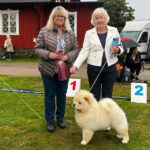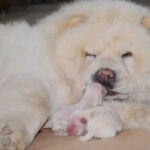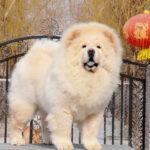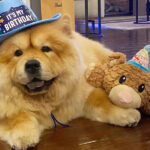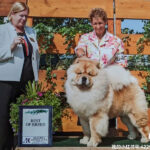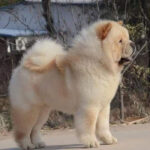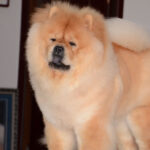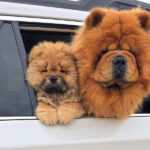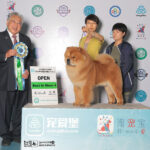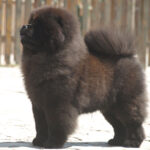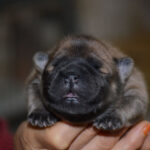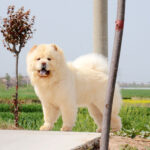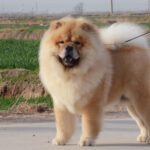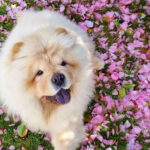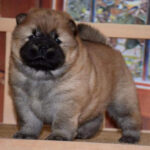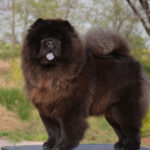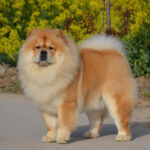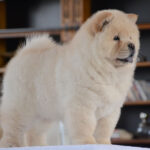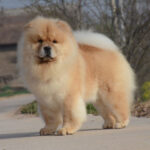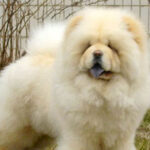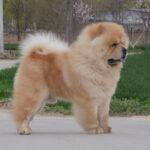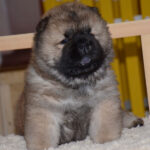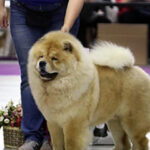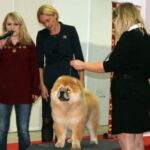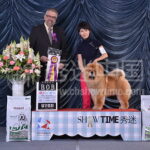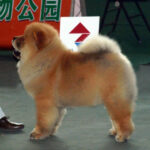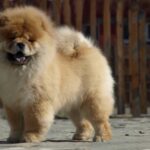
The origins of the Chow Chow breed have long been debated, with various theories and hypotheses proposed. Some scholars believe that the breed was the result of a crossing between the old Tibetan Mastiff and the Samoyed of Northern Siberia, while others suggest that the Chow was the original ancestor of the Samoyed, the Norwegian Elkhound, the Pomeranian, and the Wolf Spitz.
However, there is archaeological evidence that suggests that a broad-headed, short-muzzled “dog” was known during the Siberian Bronze Age and was partially domesticated by ancient barbarian tribes of Central Asia. These “dog-lions,” as they were called, were later domesticated by tribes invading Northern China in 500 B.C.E. Artefacts show that the Chow was a distinct breed in China as early as 1000 B.C.E.
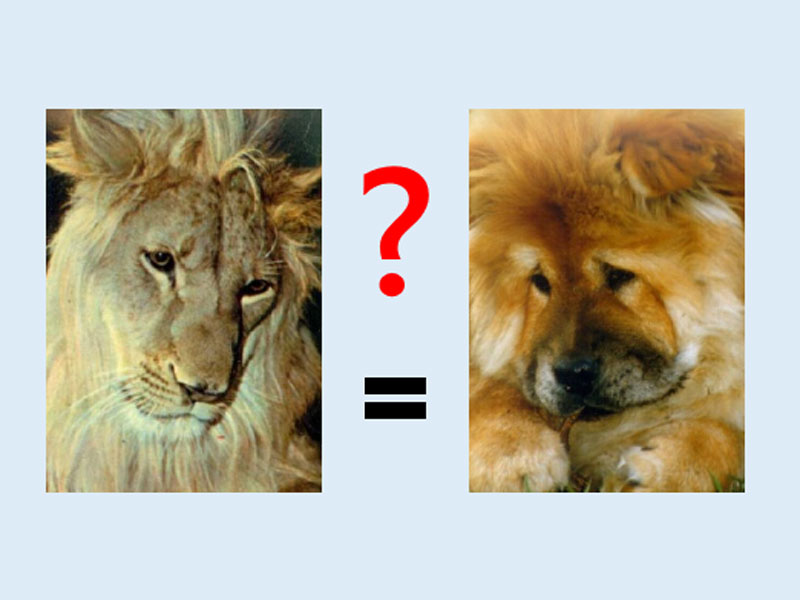
According to eminent scientists, the Chow Chow is an offshoot of primitive species like Hemicyon and Simicyon and is considered a kind of living fossil that preserves important characteristics. The breed’s blue-black tongue is a characteristic of the small Manchurian black bear and the small blue bear of Tibet and Kan-Su, both of which originated in the same area. The Chow Chow is believed to be the oldest primitive form of dog, and its history and evolution offer valuable insights into the canine world’s origins.
Understanding the Chow Chow’s origins and how the breed has developed over time can help owners provide the best possible care and training for their dog. The history of the Chow Chow also provides insight into the breed’s temperament, physical characteristics, and health issues. Additionally, knowledge of the breed’s origins and cultural significance can help owners appreciate and honor the breed’s heritage.
The predecessor of the Chow Chow is not well-documented, but it is widely believed to be the Arctic Wolf. The Chow Chow shares many physical characteristics with the wolf, such as its thick coat, blue-black tongue, and pointed ears.
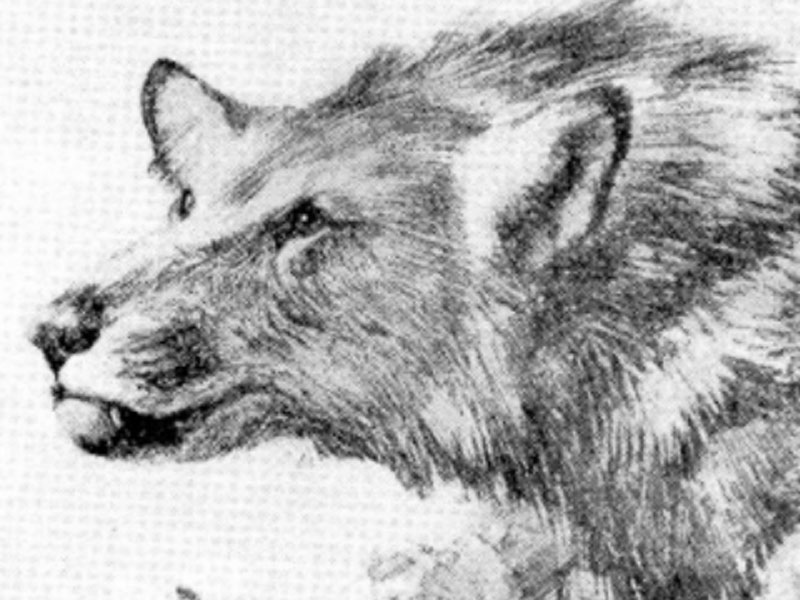
The Chow Chow is one of the oldest dog breeds, with evidence of its existence dating back over 2,000 years in China. It is believed that the breed was originally developed for a variety of purposes, including hunting, herding, and guarding. Over time, the Chow Chow became more specialized as a guard dog, especially for imperial palaces and wealthy households.
Recent genetic studies have revealed that the breed originated from the Chinese indigenous dog around 8300 years ago. The Chow Chow is recognized for its sturdy build, straight hind legs, and thick fur, particularly around the neck, giving the impression of a mane. They also have distinct features such as an extra pair of teeth and a blue/black tongue. The breed was thought to have been created gradually, but recent research suggests that the creation of the breed was very fast and interbreeding was limited. The Chow Chow has been depicted in pottery during the Han Dynasty in China, displaying a square-built body, erect ears, and a heavy coat around the neck.
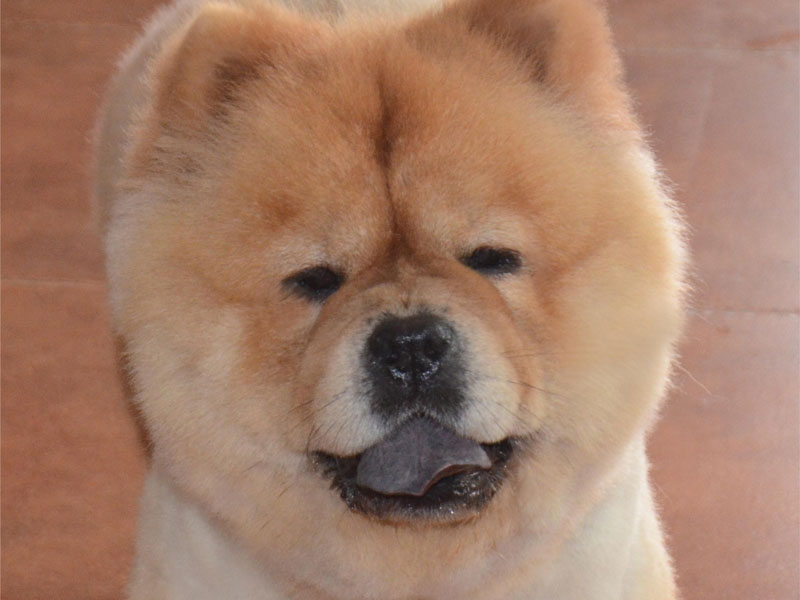
Recent genetic studies have supported the theory that the Chow Chow originated from the Chinese indigenous dog around 8300 years ago. Researchers analyzed the DNA of several dog breeds, including the Chow Chow, and found that the Chow Chow’s genetic makeup was the most similar to that of the Chinese indigenous dog. This suggests that the Chow Chow is one of the oldest and most genetically distinct dog breeds in the world.
The studies also revealed a low gene flow between Chow Chows and their source population, indicating that the formation of the breed can be very fast and subsequent interbreeding was restricted.
Additionally, pottery from the Han Dynasty in China depicts a dog with a square-built body, erect ears, and a heavy coat around the neck, all characteristics associated with the Chow Chow breed.
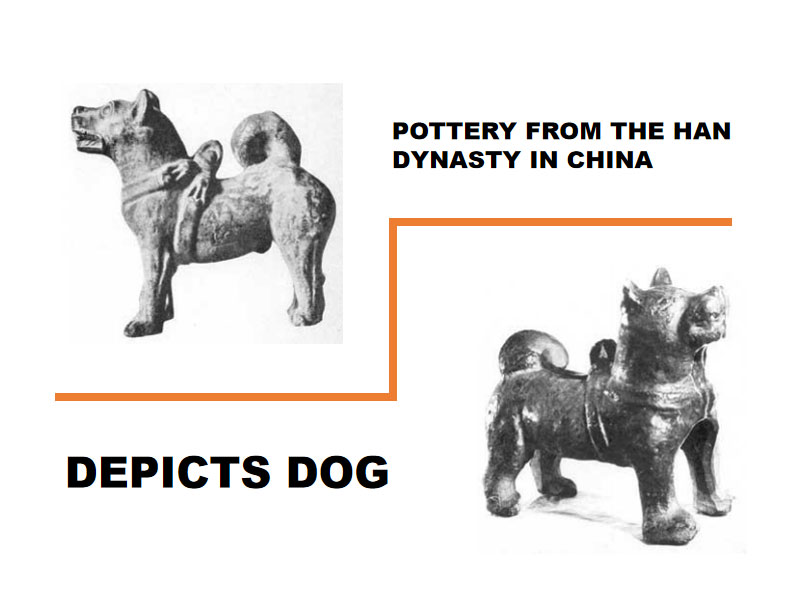
The Chow Chow played a significant role in ancient China, serving as both a hunting and guard dog and a symbol of protection in Chinese lore. The Chow Chow was a versatile breed in ancient China, used for hunting, herding, pulling sleighs, guarding, and even for making articles of clothing from their coats, as well as consuming their meat.
Dogs resembling the Chow Chow have been used for various roles throughout history, including hunting, herding, and guarding. The Chow Chow, in particular, was used for hunting and guarding in ancient China, where it was highly valued by the emperors of the Tang dynasty. They kept hunting kennels of 25,000 couples of Chows. These dogs were members of the Imperial Household and were fed on the best rice and meat by an army of servants.
The breed was also used for herding and pulling sleds. The thick, dense coat of the Chow Chow, along with its sturdy build, made it well-suited for cold climates and harsh working conditions.
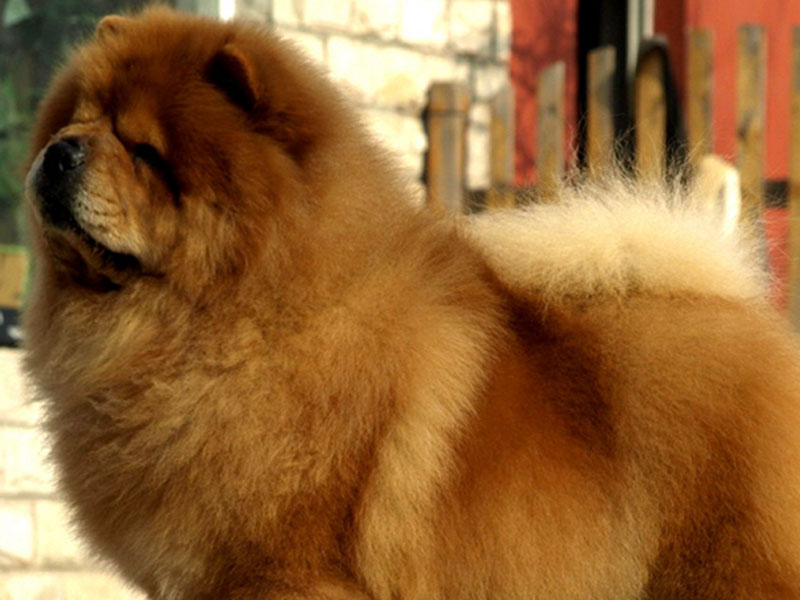
The Chow Chow’s diverse history has led to the emergence of distinct breed types based on region and purpose. The breed’s working origin is still visible today, as it remains an excellent watchdog and intimidates many people with its protective nature.
According to the American Kennel Club breed standard, the Chow Chow was an “all-purpose dog of China” that was used for hunting, herding, pulling, and protection of the home. The breed’s flattened face gave it an almost “lion dog” appearance, which was greatly appreciated by emperors and nobles. The Chow Chow’s unique appearance, with its thick double coat and blue-black tongue, made it an important symbol of protection in Chinese lore. The breed can be traced back for thousands of years, and it is often questioned whether the Chow Chow is the most ancient of the Chinese breeds of dogs.
The Chow Chow’s bright yet aloof nature has made it a popular breed around the world, with consistent registration numbers. The breed has been bred for different purposes and in different regions, leading to distinct types.
The Chow Chow has played a significant role in ancient Chinese culture. The breed’s origins in China over 2,000 years ago make it a significant part of the country’s history. The Chow Chow was considered a symbol of protection, much like the traditional stone guardians found in front of Buddhist temples. The breed’s significance in ancient China is also evident in its use as a companion dog in the imperial court alongside other breeds such as the Pekingese and Tibetan Spaniel.
Chinese legends even mention large war dogs from Central Asia that resembled black-tongued lions, which are believed to be the Chow Chow breed. The breed’s thick double coat, available in various colors, is particularly dense in the neck area, giving it a distinct mane or ruff appearance. The Chow Chow’s enduring popularity in ancient China is a testament to its unique characteristics and cultural significance.
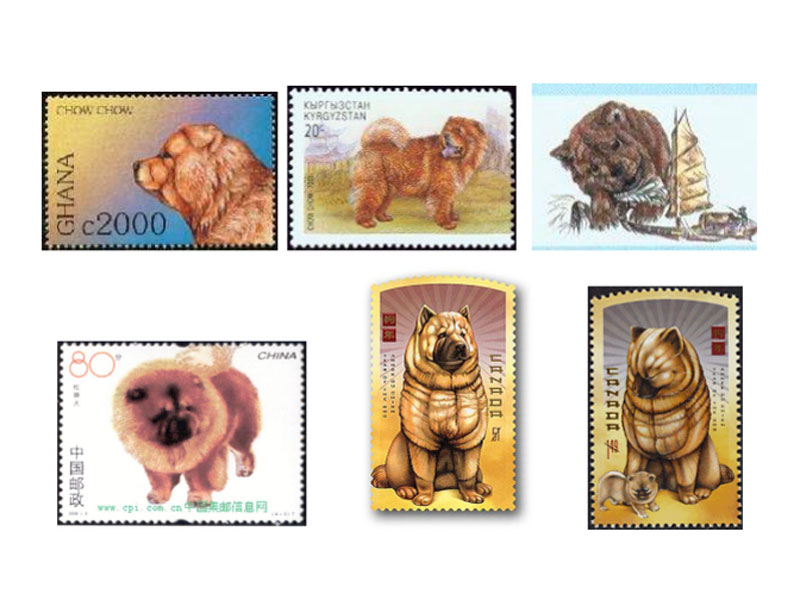
The Chow Chow was first introduced to Europe in the late 18th century, when British merchants brought back specimens from China. These early imports were mostly used as exotic curiosities and were not bred for any specific purpose. However, as the breed’s popularity grew, so did its use as a show dog.
In 1895, the breed was officially recognized by the Kennel Club in the United Kingdom, and the first Chow Chow Club was formed in England. From there, the breed quickly spread throughout Europe, becoming popular among both royalty and commoners alike. The Chow Chow’s exotic appearance and loyal nature made it a favorite among dog enthusiasts, and it soon became a fixture in the show ring.
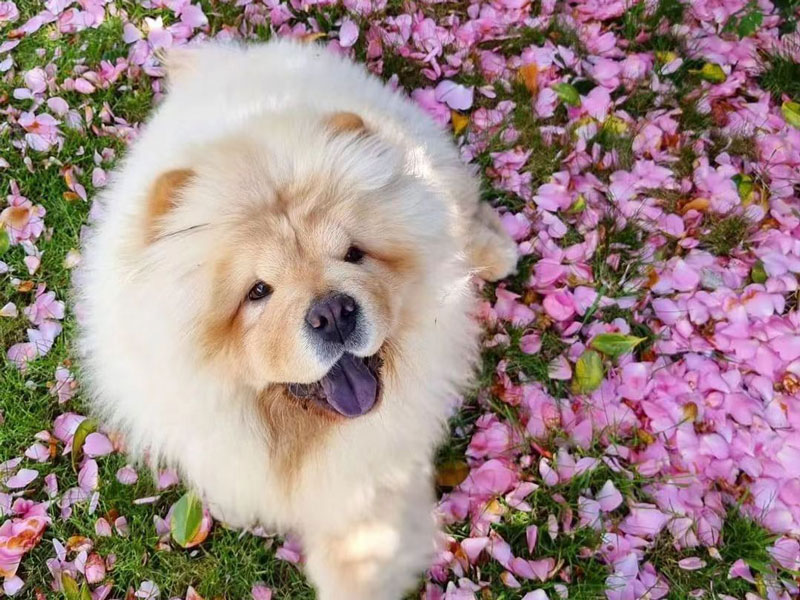
The first Chow Chow brought to Europe remains a subject of debate among historians and dog experts. While some sources suggest that the breed was first introduced to Europe in the late 18th century, others suggest that Chow Chows were brought to Europe by traders and explorers much earlier.
According to one theory, Marco Polo brought the breed to Europe from China during his travels in the 13th century. Another theory suggests that the Chow Chow was brought to Europe by Dutch and Portuguese traders in the early 17th century, who traded with the Chinese and brought the breed back to Europe as exotic pets.
The first recorded Chow Chow to be brought to Europe was in 1781, when a British merchant ship named “The Sea Dog” brought several of the dogs to England. One of these dogs was given as a gift to King George IV, who fell in love with the breed and helped to popularize it in Europe. Regardless of how the first Chow Chow was brought to Europe, it is clear that the breed quickly gained popularity among European aristocrats and became a status symbol in the late 19th and early 20th centuries.
The initial reception of Chow Chows in the West was one of fascination and curiosity. The breed’s unique appearance, with its thick fur, blue-black tongue, and almost lion-like face, was unlike any other dog breed that Westerners had seen before.
In the late 19th century, Chow Chows were introduced to Europe and America as exotic imports from China. They were often exhibited in dog shows and attracted a lot of attention. However, there was some confusion about their exact origins and breed characteristics. Some early Western dog fanciers believed that the Chow Chow was a mix of a dog and a bear or a raccoon, which led to the breed being classified as a “wild animal” in some countries. Despite this confusion, the Chow Chow’s popularity grew, and by the early 20th century, it had become a fashionable breed among the upper classes.
In 1903, the Chow Chow Club of America was formed, and in 1905, the breed was recognized by the American Kennel Club. The Chow Chow’s initial reception in the West helped to establish it as a unique and highly sought-after breed, despite the initial confusion about its origins and characteristics.
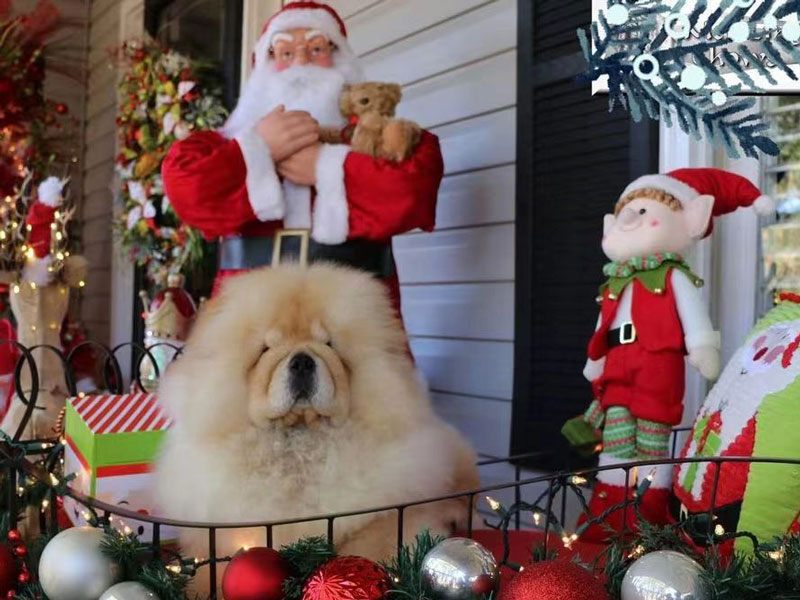
The Chow Chow’s popularity in Europe grew rapidly in the late 1800s, thanks in part to the breed’s unique appearance and the influence of Queen Victoria. The Queen’s interest in the breed helped to popularize it among the upper classes, and many wealthy families began to acquire Chow Chows as companion animals. The breed was also exhibited at dog shows throughout Europe, which further contributed to its popularity.
By the early 1900s, the Chow Chow had become one of the most sought-after breeds in Europe, with breeders working to develop a standard for the breed that emphasized its unique characteristics.
Today, the Chow Chow remains a popular breed in Europe, with many dedicated breeders and enthusiasts working to maintain its distinctive appearance and loyal, protective temperament.
The Chow Chow was introduced to the United States in the late 1800s, shortly after the breed’s arrival in Europe. In 1890, the first Chow Chow was imported to the United States from England by a wealthy American couple, and the breed quickly gained popularity among the wealthy elite. The American Kennel Club officially recognized the Chow Chow breed in 1903, and the first Chow Chow breed club in the United States, the Chow Chow Club Inc., was formed in 1906.
The Chow Chow’s popularity in the United States began to rise in the early 20th century. The breed quickly gained popularity as a status symbol among the wealthy due to its exotic appearance and imperial history. However, the breed’s popularity declined during World War II, as many breeds were deemed “nonessential” and owners were encouraged to donate their dogs to the war effort.
Despite this setback, the Chow Chow eventually regained popularity. Throughout the 20th century, the Chow Chow’s popularity continued to grow in the United States, with many famous people owning the breed, including Elvis Presley, Martha Stewart, and Michael Jackson.
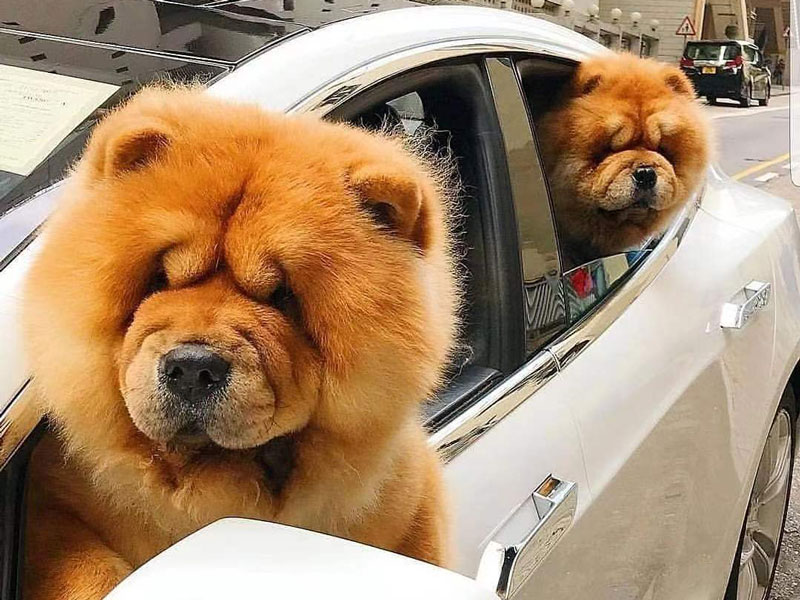
Historical Chow Chows were renowned for their unique physical appearance, which remains a hallmark of the breed today. These dogs typically weighed between 40 and 70 pounds, with males being larger than females. They had a sturdy build with a broad skull and flattened face, which gave them a distinctive “pug-like” appearance. Chow Chows also had small, rounded ears and a thick, muscular neck that was covered by a heavy ruff of fur. Their thick double coat, which could be either rough or smooth, was typically black, red, or blue, and they had a blue-black tongue, which was highly prized.
Historical Chow Chows were known for their aloof and independent nature, which could make them challenging to train, but also made them excellent guard dogs. They were highly protective of their family and territory, and their intimidating appearance and reserved demeanor made them an effective deterrent to intruders. Despite their independent nature, they were also loyal and affectionate with their family members.
Over time, the Chow Chow breed has undergone several adaptations and changes. One of the most significant changes was the development of a breed standard that outlined the ideal physical characteristics and traits of the breed.
This standard led to the breeding of Chow Chows with more consistent and desirable traits, such as a more compact body, a thicker and more luxuriant coat, and a more upright and stilt gait. The breed standard also encouraged the breeding of dogs with more distinctive features, such as the blue-black tongue and the “panda” markings around the eyes.
Additionally, breeders focused on breeding Chow Chows with more docile and affectionate temperaments, as the breed was becoming more popular as a companion animal. This led to a shift away from the breed’s traditional working dog origins and towards a more domesticated and less aggressive breed. Today, Chow Chows are known for their unique appearance, their loyalty and protective nature, and their ability to make excellent companion animals.

